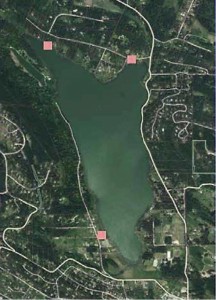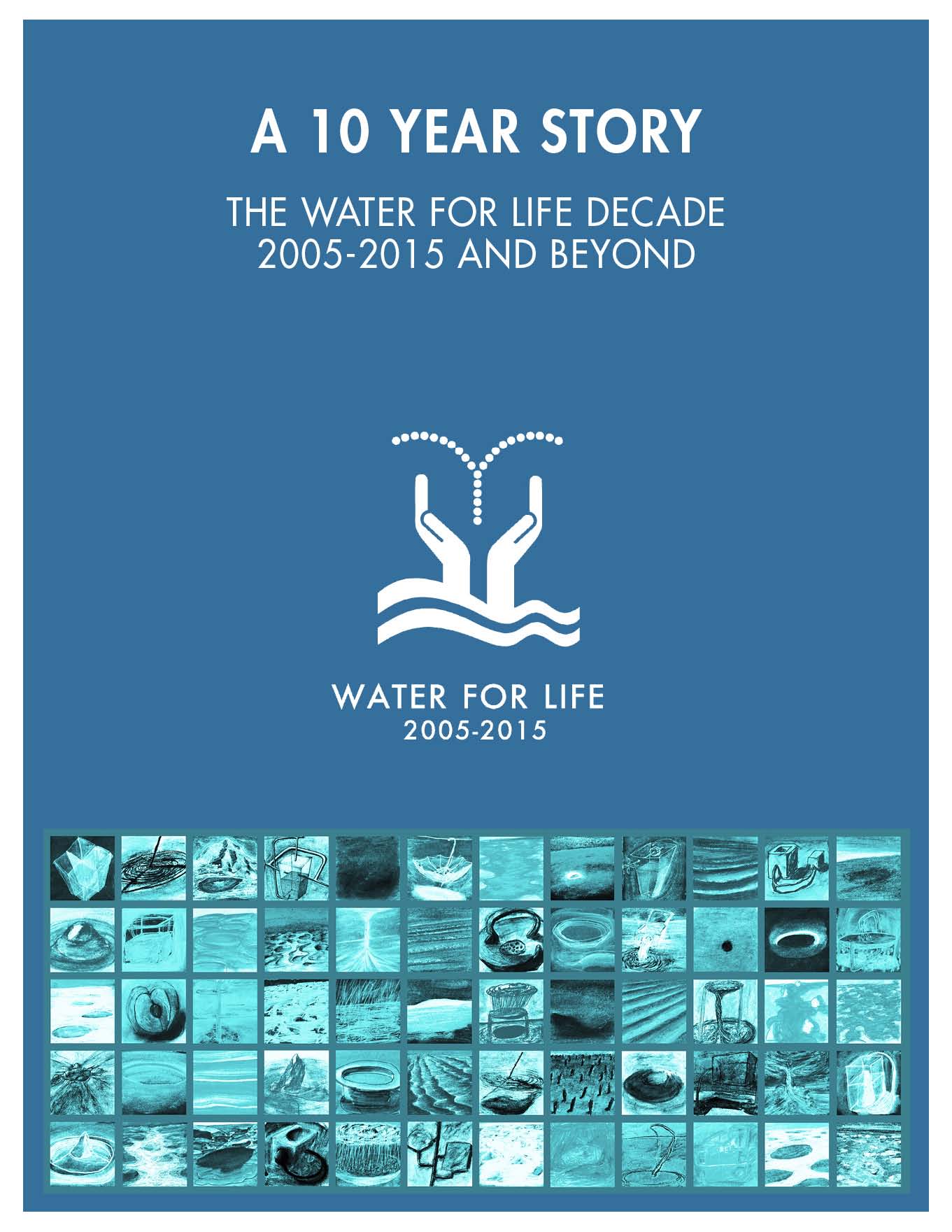Collaborative Watershed Governance on Salt Spring Island: Blueprint for a Resilient Response to Climate Change
Note to Reader:
The ‘Ten Year Story: The Water for Life Decade 2005-2015 And Beyond’ has just been released by the United Nations. It’s activities were evidence that watershed system resilience may be built by shifting from traditional silo governance to a more collaborative model: including strong leadership at a provincial and regional level, rounded out with local participation in monitoring and other stewardship actions.
Salt Spring Island Watershed Protection Authority follows a uniquely participatory integrated watershed planning and co-governance process, aimed at responding to change in order to construct sustainable relationships with local watershed resources.
‘Water For Life’: The United Nations International Decade for Action
Although designed for developing nations, the ‘Water for Life’ targets may guide British Columbians towards greater community resiliency, human health and equity, and ecosystem protection. They are:
- Universal access to safe drinking water, sanitation and hygiene, improving water quality and raising service standards
- Sustainable use and development of water resources, increasing and sharing the benefits
- Robust and effective water(shed) governance with more effective institutions and administrative systems
- Improved water quality and wastewater management taking account of environmental limits
- Reduced risk of water-related disasters to protect vulnerable groups and minimize economic losses (drought, flooding, etc.)
As the ‘Water for Life’ decade drew to a close in 2015, milestones were celebrated. Coordinating partners around single plans, transparent and cooperative allocation of resources and monitoring were some of the touchstones for sustainability outlined in the decadal report.
The report states, “The need for building the capacity of local governments to act as the convener and coordinator of local stakeholder processes still needs more effort” (Ten Year Story: The Water for Life Decade 2005-2015 p. 26).
Robust and effective watershed governance
“Treated lakewater is the potable water source for more than 50% of the island’s residents”, stated coordinator Shannon Cowan. “The toxin-producing, prolonged cyanobacterial blooms of 2011-2013 in the largest Salt Spring Island lake created  an acute need for a coordinated, inter-jurisdictional response for water quality issues”.
an acute need for a coordinated, inter-jurisdictional response for water quality issues”.
To address that need, the Salt Spring Island Watershed Protection Authority was created in late 2012 in response to cyanotoxins in the lakewater, and the ‘Do Not Consume’ advisories that impacted the health and livelihoods of locals and tourists.
Whole-Watershed Approach
SSIWPA established a whole-watershed approach and a structured planning process founded on scientific evidence, coordinated governance that included multi-stakeholder workshops and locals in advisory roles: the outcome is an integrated watershed management plan for St. Mary Lake watershed.
In direct response to recent drought conditions, SSIWPA has also expanded its mandate, to include sustainable freshwater supply and demand management (surface, and groundwater) of the island’s watersheds – a task it is still beginning to coordinate.
SSIWPA member agencies include: BC Ministry of Environment, Capital Regional District, Fernwood Water Local Service Commission (CRD), Island Health, North Salt Spring Waterworks District, and Salt Spring Island Local Trust Committee (Islands Trust), and its newest member – BC Ministry of Forests, Lands and Natural Resource Operations.
SSIWPA also relies heavily on the volunteer commitment of local experts in the natural resource sciences (limnologists, hydrologists, geologists, fisheries biologists, engineers, and others) for their ongoing participation in the watershed monitoring and planning processes.
Integrated Watershed Management Planning: the St. Mary Lake example
“The St. Mary Lake Integrated Watershed Management Plan was released on October 23, 2015. It is a result of involvement and participation of residents,  stakeholders, and community organizations, as well as the several agencies that constitute SSIWPA, and who care about the long-term health of our precious watersheds,” said George Grams, Chair of SSIWPA.
stakeholders, and community organizations, as well as the several agencies that constitute SSIWPA, and who care about the long-term health of our precious watersheds,” said George Grams, Chair of SSIWPA.
“The Plan gives us the blueprint for the future, including regulations, legislation, research strategies and actions to help us meet our primary objective of improving raw lake water quality.”
Compass Resource Management Ltd. guided the structured decision-making planning process for SSIWPA to generate this plan (i.e., four workshops over six months). “What makes the plan innovative is its foundation in both strong science, and local socioeconomic values”, claims Coordinator Cowan. Public feedback obtained in a month-long consultation was also included.
Research Challenges Perceptions in St. Mary Plan
“The SSIWPA technical working group developed and carried out a research program to determine the relative inputs to St. Mary Lake of the nutrient phosphorus from bottom sediments, septic sources, and other sources of creek inflow and land runoff. This forms the backbone of the Plan. The Plan objectives and actions developed by the technical and steering groups were tested by the public advisory committee to achieve a consensus about impacts and feasibility from a broad spectrum of social, cultural, and economic viewpoints,” stated Chair Grams.
New Scientific Evidence Reveals That….
During the development of the Plan, many perceptions about St. Mary Lake watershed were challenged as new scientific evidence and information became available. Some of the highlights include:
- Phosphorus entering the lake from septic systems is extremely minimal, so previous central sewer recommendations are no longer viable;
- The 40-year record of lake water phosphorus concentration indicates no long-term trend of increasing phosphorus concentration in the lake, yet seasonal variability is high;
- Phosphorous entering the lake through stormwater runoff is subject to ongoing field measurements, but might be greater than previously reported (1983). Therefore, mitigating phosphorus enrichment from the watershed is proposed in this Plan;
- Altering the lake ecosystem by adding or removing organisms may have unintended negative consequences.
Notably, some of the plan’s central actions include ongoing monitoring of external nutrient inputs to reinforce preliminary findings, as the climate and seasonal norms continue to shift.
Application of UN ‘Water for Life’ Targets
Through robust and effective watershed governance mechanisms, several BC communities are already beginning to realize some of the UN decade ‘Water for Life’ targets, especially in terms of cooperative systems for knowledge management, and public education about water resources and appropriate technologies: coordinated local watershed boards or roundtables, like SSIWPA are gaining traction across the province.
These promise to enhance waterwise communities and to build resiliency through cross-jurisdictional communication; systems for locally-relevant climate response and informed action to protect water and ecological resources.
“We are very hopeful that commitment to high-level scientific expertise, as well as public stewardship and involvement in integrated watershed planning, will contribute to successful implementation, and therefore greater water resource sustainability on Salt Spring Island,” concluded Grams.
To Learn More:
Visit ‘Water For Life’: The United Nations International Decade for Action
To download a copy of the UN report, click on Ten Year Story: The Water for Life Decade 2005-2015 And Beyond




